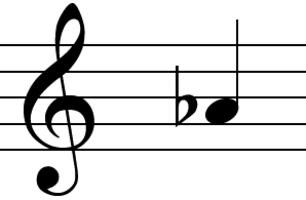
The only exception is that a flat lowers the note one half step while a double flat lowers it two half steps. Either way you do this, you should get the same result.Īs mentioned above, I prefer to not think about the key signature at all and play the double-flatted note one whole step lower.ĭouble flats are altered notes much like flats. If that’s difficult, then think of the flatted note (Bb) and only lower it one half step to A. Pretend the key signature doesn’t even exist at all. The easiest way to read this is to ignore the key signature completely and play the note two half steps or one whole step lower. Now, what if there is a Bb written in the key signature and B double flat in the music? How do I read this? Here’s a list of double flats to help you out: While looking at the double-flatted note in the music, I play the note a whole step below. I think of double flats in this way when I read them. Moving two half steps lower is the same as playing two immediate keys to the left on the piano.Īs an example of this, if you started on G and moved two half steps or one whole step lower, you have F.

This is similar to double sharps, except we are lowering the pitch instead of raising it. Their job is to lower the pitch of the note two half steps. Have you ever noticed two small flat signs next to each other in your music? What in the world does that mean? Well, those two flats written next to each other are called double flats.


 0 kommentar(er)
0 kommentar(er)
